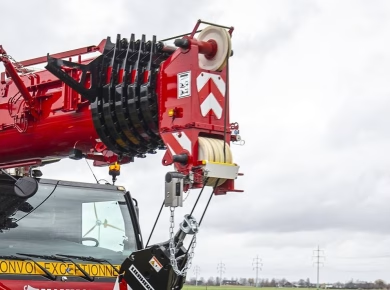Construction sites can be fertile ground for oversight, and it’s often the small details that lead to significant violations of OSHA regulations. In my years on job sites, I’ve seen firsthand how easily the most critical rules can slip through the cracks, leading to accidents, fines, and, in the worst cases, loss of life. Understanding OSHA 1926 violations can feel overwhelming, especially when there are so many regulations to keep track of. However, focusing on the most commonly overlooked rules can make a substantial difference in your safety practices and compliance.
Commonly Ignored Fall Protection Protocols
Falls are one of the leading causes of fatalities in construction, yet I’ve often noticed that fall protection measures are inadequately implemented or completely ignored. Under OSHA’s regulations, any worker at a height of six feet or more must have proper fall protection in place. This includes guardrails, safety nets, or personal fall arrest systems.
Real-World Example
I once worked on a site where the crew was tasked with roofing a multi-story building. The foreman had a tight deadline and decided that setting up guardrails was too time-consuming. It wasn’t until a near-miss incident occurred that we realized how reckless this decision was. A worker slipped while carrying materials and only narrowly avoided a serious fall. The incident prompted a site-wide safety meeting, emphasizing that cutting corners on fall protection can have dire consequences, both in terms of safety and potential legal ramifications.
Inadequate Training and Safety Briefings
Another area where I’ve seen significant violations is in the realm of training. OSHA mandates that all employees should receive adequate training tailored to the specific hazards they may encounter on the job site. However, many companies rush this process or overlook it entirely, leading to a workforce that is unprepared for the risks they face.
The Importance of Regular Safety Meetings
In one of my previous roles, we implemented a weekly safety toolbox talk that addressed various topics, including equipment handling and the importance of PPE. This initiative not only complied with OSHA standards but significantly improved safety awareness among the crew. Workers began to voice concerns and share insights, ultimately fostering a culture of safety that permeated the entire site. It’s clear that regular training and open communication can mitigate risks and enhance compliance.
Neglecting Personal Protective Equipment (PPE)
Personal protective equipment is a fundamental aspect of construction safety, yet I frequently observe neglect regarding its use. OSHA requires that appropriate PPE be provided and worn by employees exposed to hazards. This includes hard hats, gloves, eye protection, and high-visibility clothing.
Challenges in Compliance
A challenge I’ve faced is ensuring that all team members consistently wear their PPE. During a busy construction day, it’s all too easy to forget a hard hat or safety glasses, especially when the focus is on meeting deadlines. I implemented a buddy system where workers would check each other’s PPE before starting their shifts. This simple practice not only reinforced safety but also encouraged accountability among the team.
Ignoring Proper Scaffolding Standards
Scaffolding is another area that often gets overlooked in terms of safety compliance. OSHA has specific regulations governing scaffold design, construction, and use. Yet, I’ve seen many sites where scaffolding is either improperly erected or not inspected regularly, increasing the risk of accidents.
The Consequences of Non-Compliance
On one project, a crew used makeshift scaffolding that was not compliant with OSHA standards. During a routine inspection, it was flagged for being unstable and unsafe. The crew was forced to dismantle and rebuild it, causing delays and additional costs. This incident served as a powerful reminder of the importance of adhering to proper scaffolding protocols to prevent accidents and maintain productivity.
Overlooking Hazard Communication Standards
Hazard communication is an essential part of maintaining a safe work environment, yet it’s often brushed aside. OSHA’s Hazard Communication Standard requires that workers be informed about the hazardous substances they may encounter on-site. This includes proper labeling and access to Safety Data Sheets (SDS).
Implementing Effective Hazard Communication
In one instance, a new chemical was introduced to our site for a specific task, but no proper training or documentation was provided regarding its hazards. This led to confusion and anxiety among the workers. After recognizing this gap, we took immediate action by conducting a training session and ensuring that all relevant SDS were accessible on-site. This not only improved safety but also empowered workers to handle materials confidently.
Conclusion: Prioritize Compliance and Safety
The stakes in construction are incredibly high, and overlooking OSHA 1926 regulations can lead to dire consequences. By focusing on the most commonly ignored rules—fall protection, training, PPE, scaffolding, and hazard communication—you can create a safer environment for your crew and reduce the risk of violations.
Reflect on your current practices and consider where you might be slipping. Ensuring compliance isn’t just about avoiding fines; it’s about fostering a culture of safety that protects lives. As professionals in the industry, it’s our responsibility to prioritize safety and set an example for others. Every small step taken towards compliance can lead to a safer, more efficient construction site.



